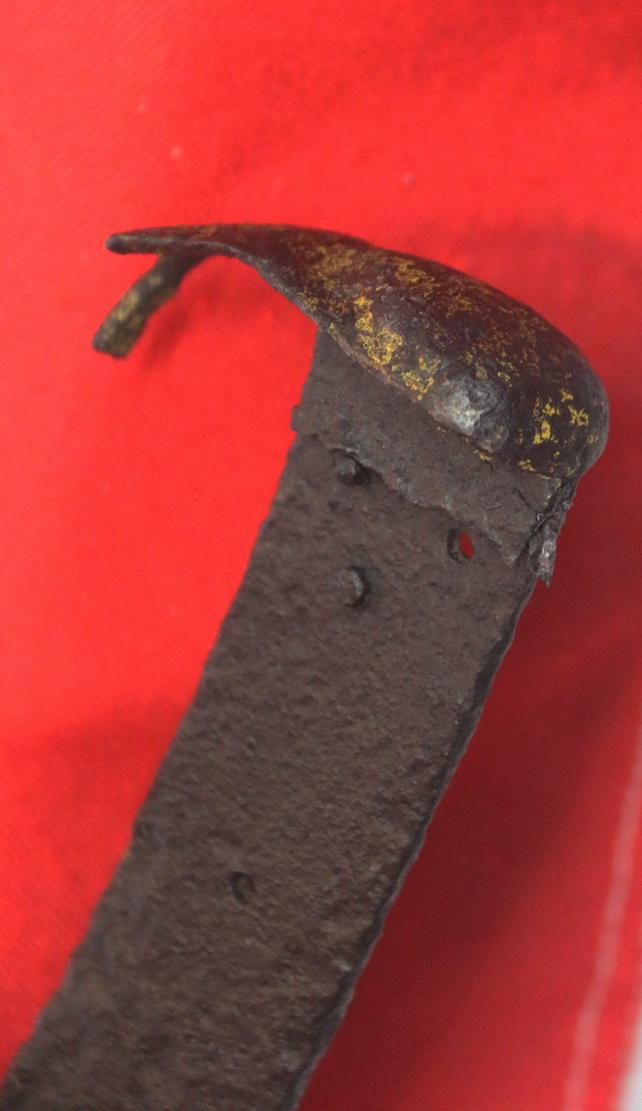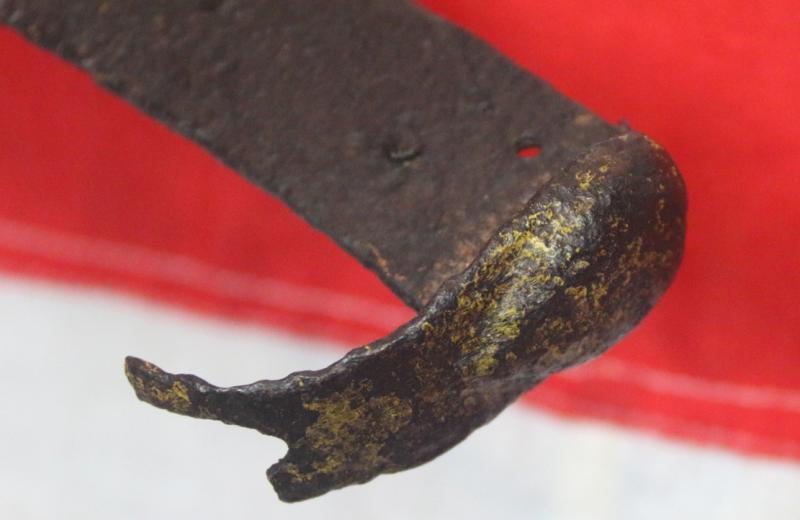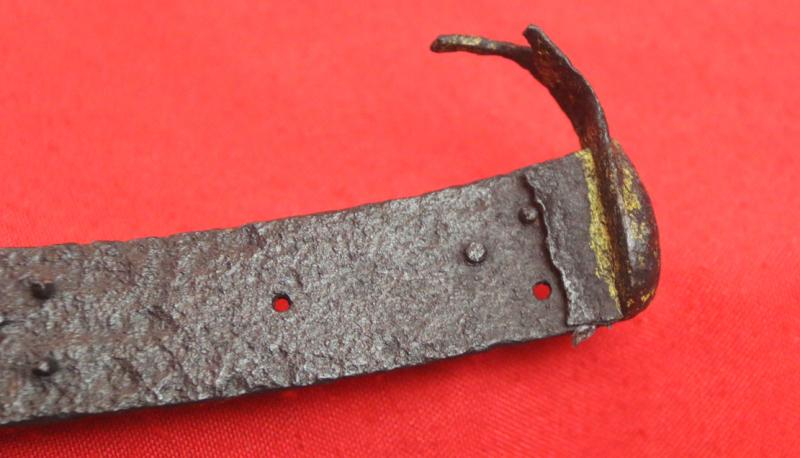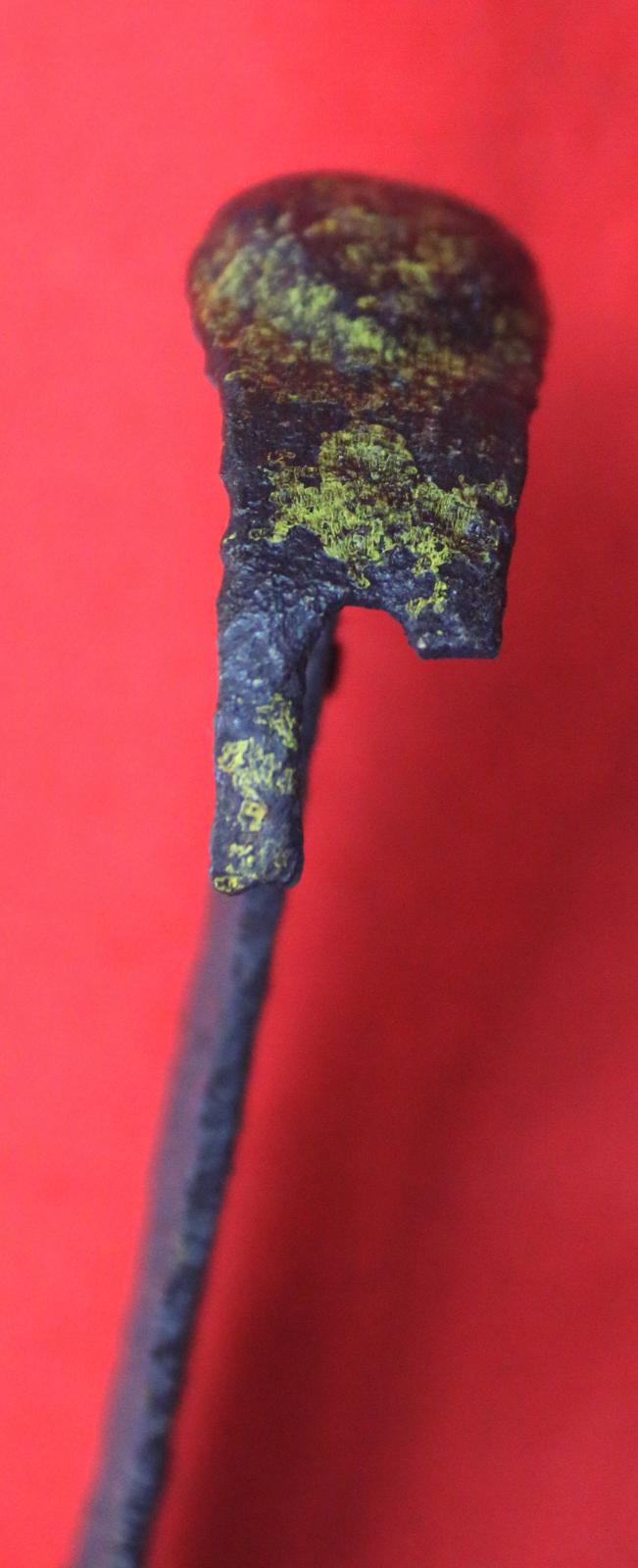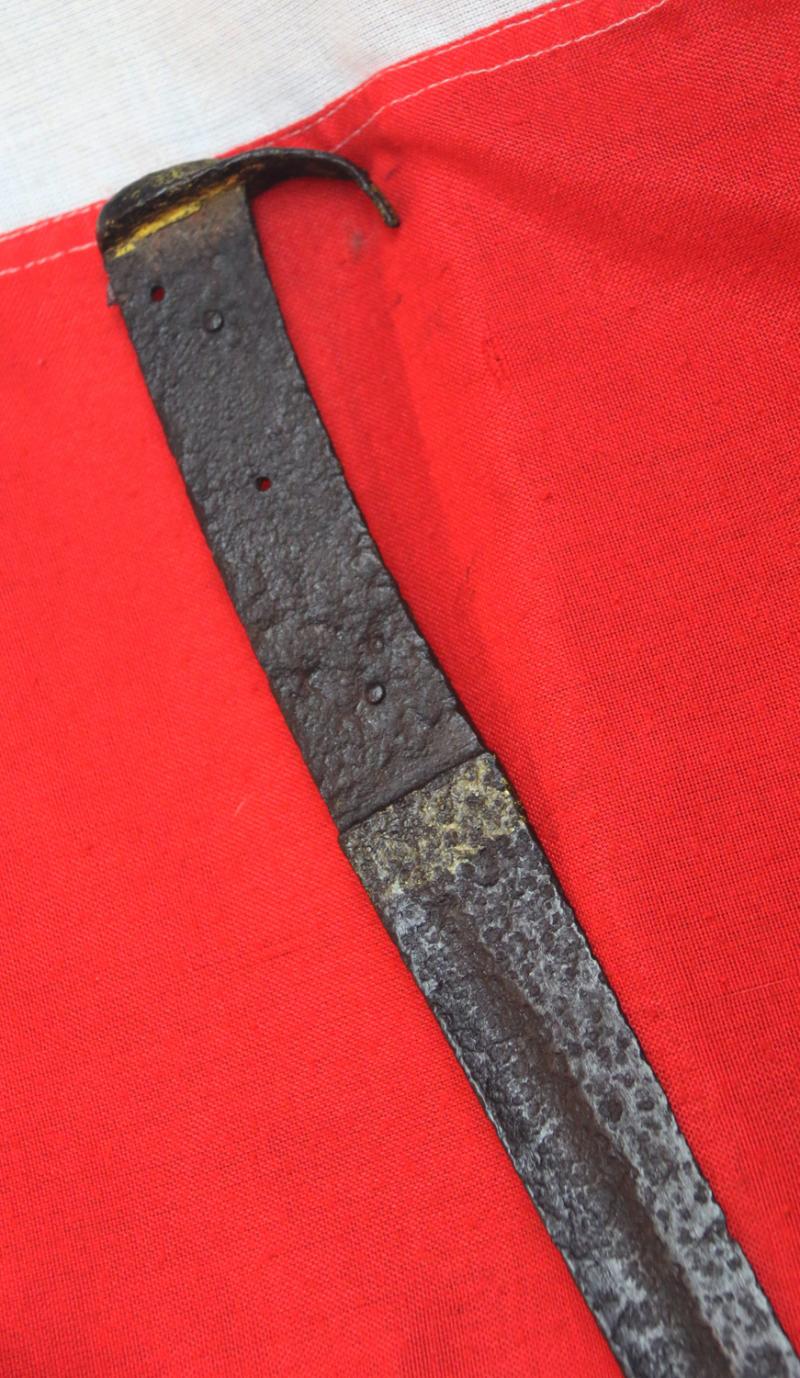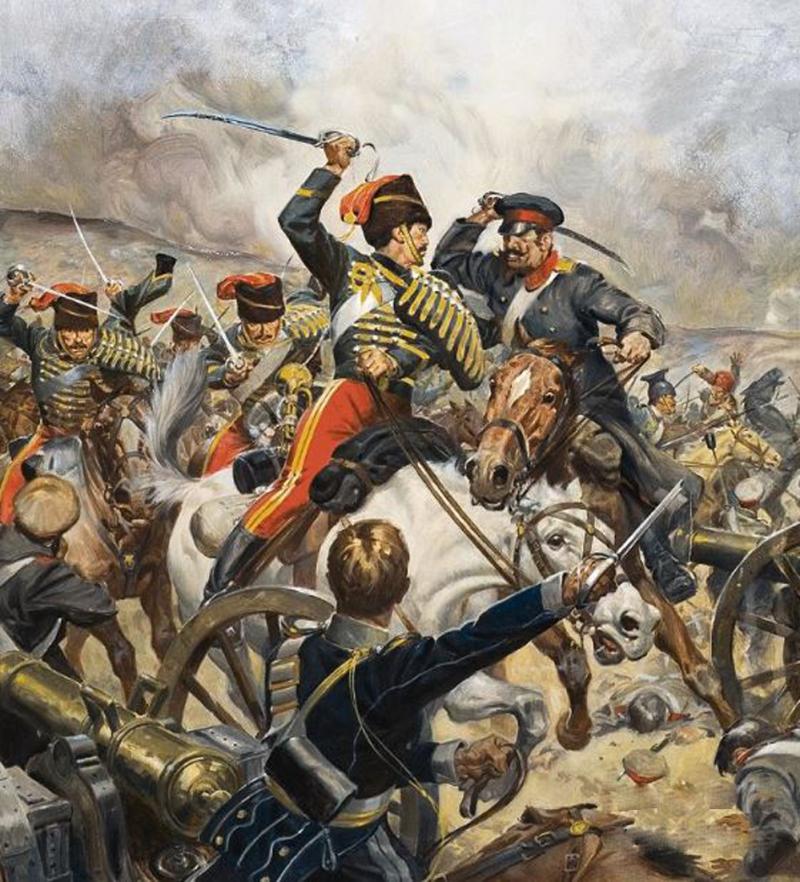An 1853 Pattern Relic Sword Blade from the Charge of the Light Brigade. Recovered in the Soviet Period from The Balaclava Battle Site
Part of superb Crimean War period collectables we have just acquired. Including, a officer's light cavalry pistol, an 1853 bayonet from Sebastopol, an Officer's Bearskin of the Scots Fusilier Guards, plus this relic sword blade, with no basket hilt remaining, just the blade its tang and the top mounted 'tear drop' tang button. One can reasonably assume the the basket hilt was blown off by a shell hit in the charge. It could look super suitably framed.
An 1853 relic sword blade from the 'Charge of the Light Brigade' at Balaclava in the Crimea.
A relic sword from the Charge of the Light brigade battle site, in the Crimea, recovered during the demise of the Soviet era by a Russian naval officer in the early 1990s, along with a Royal Dragoon Guards dress/combat helmet that we bought from the Russian officer around 30 years ago, and we sold in just days. That helmet too was in a sorry state, almost fully crushed, but my, what a piece of history. Just like that helmet, what this blade it lacks in condition, it more than makes up for in conversational speculation and amazing interest.
The incredible story around that area of conflict is that for much of the 20th century it was completely cut off from visitors due to it location near Sebastopol a highly important Ukrainian naval port, during both the Romanov and Soviet era, and in numerous battle sites, relics from the French, British, Russian and German armies lay side by side undisturbed, from a century of battles, from the Crimean War, WW1 and WW2.
Around 30 years ago we acquired from the same source, an 1850 British heavy cavalry helmet, heavily damaged, that was recovered from the same region. An amazing original relic from the past famous British mounted combat during the war in the Crimea.
Out of interest, around 30 years ago we owned the foul weather sabretache of Captain Nolan that he used, and carried, that very order to charge the Russian guns into the Valley of Death. The sabretache, was the one upon which he fell, when he perished when fatally wounded by a shell within sixty seconds of the commencement of charge. It came to us through the family ownership and had previously been on display in two museums until the mid 20th century.
The charge;
The Light Brigade set off down the valley with Cardigan in front, leading the charge on his horse Ronald. Almost at once, Nolan rushed across the front, passing in front of Cardigan. It may be that he realised that the charge was aimed at the wrong target and was attempting to stop or turn the brigade, but he was killed by an artillery shell and the cavalry continued on its course. Captain Godfrey Morgan was close by:
The first shell burst in the air about 100 yards in front of us. The next one dropped in front of Nolan's horse and exploded on touching the ground. He uttered a wild yell as his horse turned round, and, with his arms extended, the reins dropped on the animal's neck, he trotted towards us, but in a few yards dropped dead off his horse. I do not imagine that anybody except those in the front line of the 17th Lancers saw what had happened.
We went on. When we got about two or three hundred yards the battery of the Russian Horse Artillery opened fire. I do not recollect hearing a word from anybody as we gradually broke from a trot to a canter, though the noise of the striking of men and horses by grape and round shot was deafening, while the dust and gravel struck up by the round shot that fell short was almost blinding, and irritated my horse so that I could scarcely hold him at all. But as we came nearer I could see plainly enough, especially when I was about a hundred yards from the guns. I appeared to be riding straight on to the muzzle of one of the guns, and I distinctly saw the gunner apply his fuse. I shut my eyes then, for I thought that settled the question as far as I was concerned. But the shot just missed me and struck the man on my right full in the chest.
In another minute I was on the gun and the leading Russian's grey horse, shot, I suppose, with a pistol by somebody on my right, fell across my horse, dragging it over with him and pinning me in between the gun and himself. A Russian gunner on foot at once covered me with his carbine. He was just within reach of my sword, and I struck him across his neck. The blow did not do much harm, but it disconcerted his aim. At the same time a mounted gunner struck my horse on the forehead with his sabre. Spurring "Sir Briggs," he half jumped, half blundered, over the fallen horses, and then for a short time bolted with me. I only remember finding myself alone among the Russians trying to get out as best I could. This, by some chance, I did, in spite of the attempts of the Russians to cut me down.
The Light Brigade faced withering fire from three sides which devastated their force on the ride, yet they were able to engage the Russian forces at the end of the valley and force them back from the redoubt. Nonetheless, they had suffered heavy casualties and were soon forced to retire. The surviving Russian artillerymen returned to their guns and opened fire with grapeshot and canister shot, indiscriminately at the mêlée of friend and foe before them.
The blade while on display in Ukraine had some added yellow paint to the top and bottom of the hilt area. We have no idea why, but we have left it just as is. Maybe it was some kind of preservative.
Code: 24975
Price
on
Request


